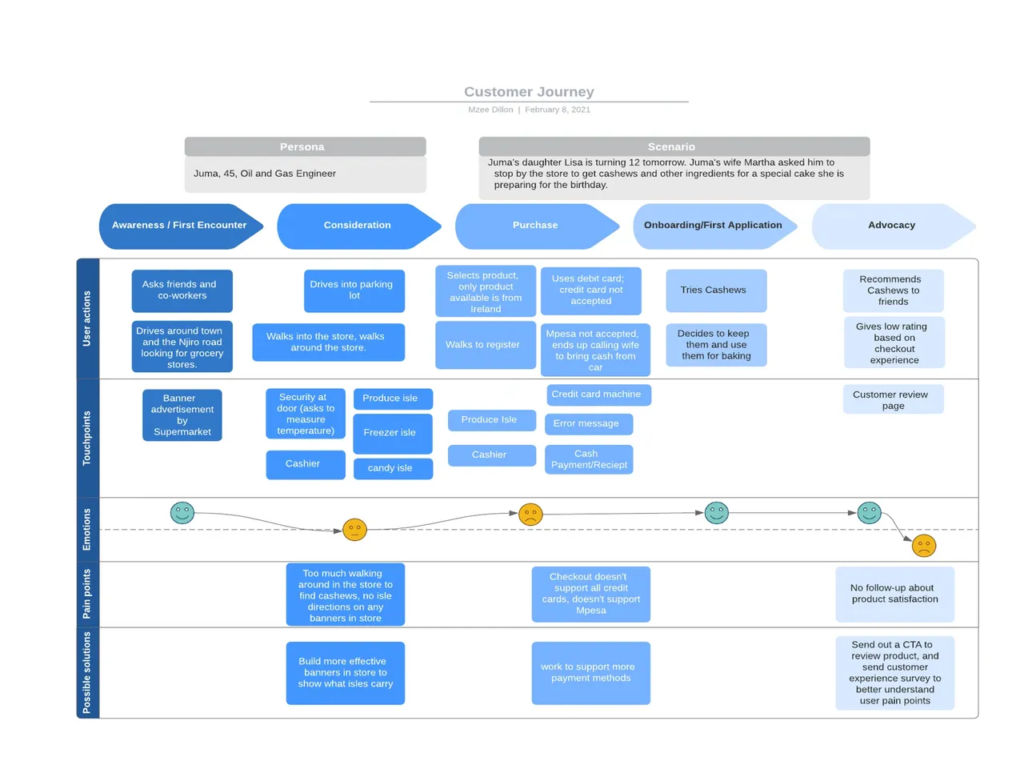Business growth is frequently sought after in different ways. Some companies invest heavily into Marketing, while some rely on word of mouth marketing from Loyal/First time Customers. Regardless of your choice in Marketing, Loyal Customers are the centre point and VIP group of every Business, and therefore Customer Experience is everything. Customer Experience is the reflection or impression that customers have on your brand throughout their journey in purchasing your products/ services.
In order to fulfil a need, Customers go through an end-to-end process, beginning at interacting with the Business/Company (visiting website, making a phone call or sending an email) to achieving goal (purchase products/services, booking reservations or making inquiries) and after. This whole process is what is called the ‘CUSTOMER JOURNEY’.

As a Business leader, knowing how your Customers interact with your website, products, services or business is part of your loyalty and retention plan. There’s a saying that “you never really understand a person until you consider things from their point of view” – Harper Lee
Customer Journey Mapping (CJM) is a visual representation/ display of the Customer Journey. While most businesses understand bits and pieces of the Customer Journey, it is more important to visualise it, and therefore become enabled to make improvements where necessary. Customer Journey Mapping helps you to walk in your customer’s shoes and have a real sense of the experience they have when they interact with your Business.
Why is it Important to Map your Customer Journey?
Customers have a high expectation of what they need from brands they choose, especially when the business world/ market place is so diversified. Customers are now more than ever looking for Consistency. Consistency will always have your Customer coming back for more. A returning customer means growth. With the right approach to CJM, you will be able to uncover ongoing Customer pain points and gain understanding on what could be optimised to improve Customer experience.
When you conduct Customer Journey Mapping and follow the customer’s journey very closely, you should be able to uncover among other things;
- Identify important interaction points
- Define level of customer experience at each point
- Identify ineffective touch-points to eliminate them and/or optimise them where necessary.
- Bring tangible evidence to assist in decision making process.
- Understand How to eliminate gaps/barriers present with the Customer Experience
How to Map your Customer’s Journey

1. Set Goals/objectives:
You need to know why you’re creating the journey map in the first place. Who is it specifically for? What is it based on? What is the clear outcome after creating the journey map?
2. Conduct research with customers to define their experience:
The best way to get to know your customer base is to create a set of questionnaires and reach out to people you know are interested with your products or services or people who have interacted with your business/company.
2.2 Ask questions like
- How did you hear about our products/ services/ company?
- Have you visited our website?
- On a scale of 1 to 10, how easy was it for you navigating through our website?
- How long did it take you to find our website?
- What attracted you the most at your first glance?
- Were you able to accomplish your goals with us?
- What more are you looking forward to with us?
With this set of questionnaires, you will be able to set a NPS (Net Promoter Score) data and be able to understand your Customers Journey.
3. Identify/ Define your Customer Touch-points
Customer touch-points are points of contact during their interaction with the company/ Business. Define what stands out when they do. Highlight points of emotion, barriers, challenges and even point of actions.
Note that each Customer touch-points will differ depending on the type of Business, Product or Services.
4. Map Current State
With what you have acquired, you can start mapping out your AS-IS Customer Journey. This will show the current realities your customers experience today. Use a chart/ Board to map it out. As you go along, identify gaps that need to be filled, dead-ends, roadblocks, ineffective touch-points etc.
5. Map Future State
Once the Current state has been mapped and challenges identified, you can now map the Future State where you directly to eliminate the challenges affecting the right Customer Experience in the process.

